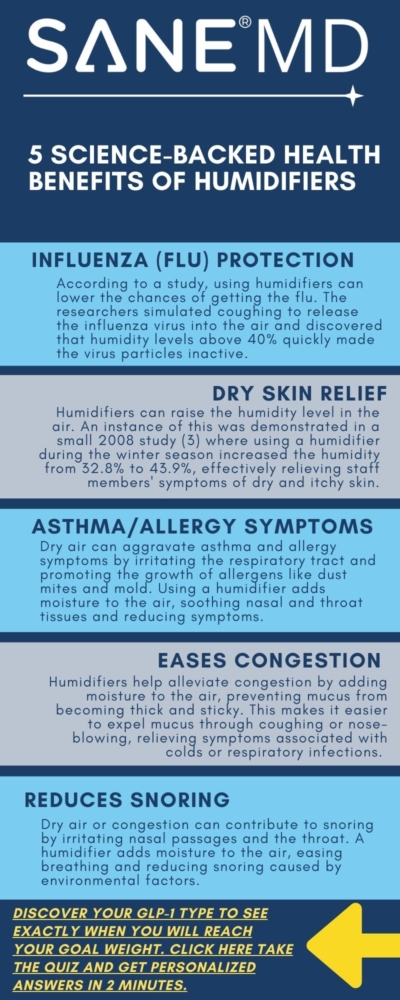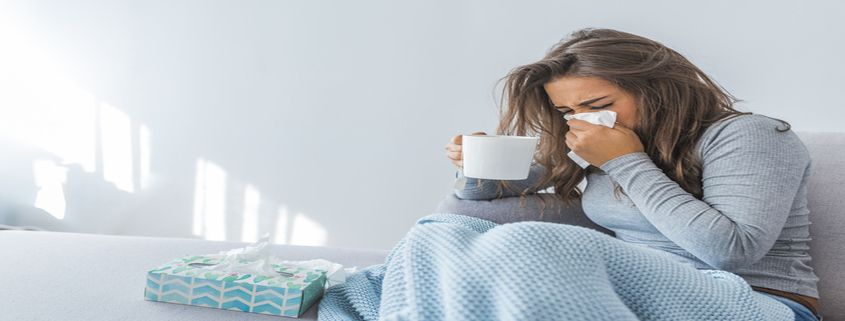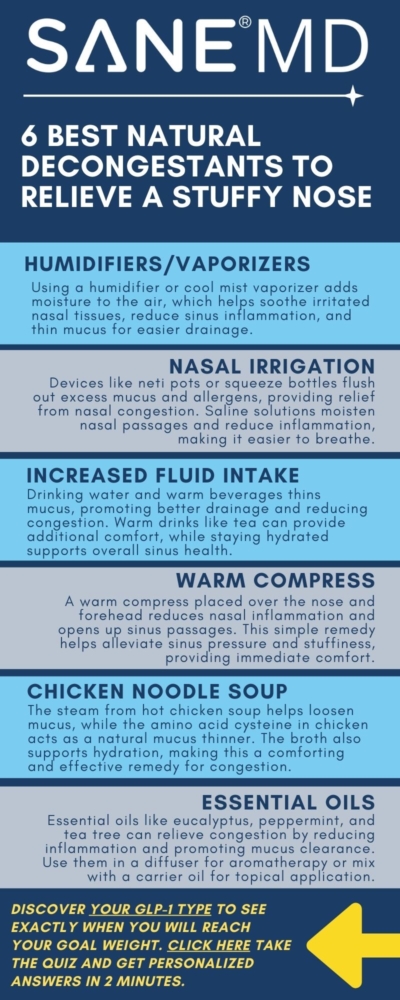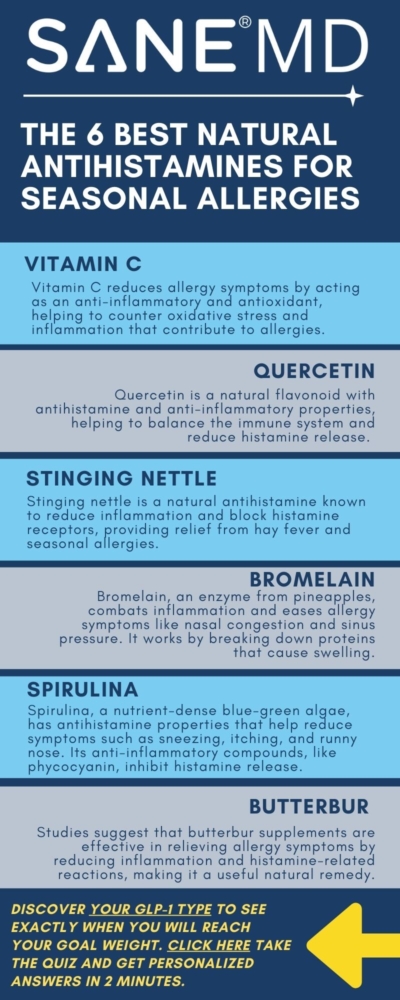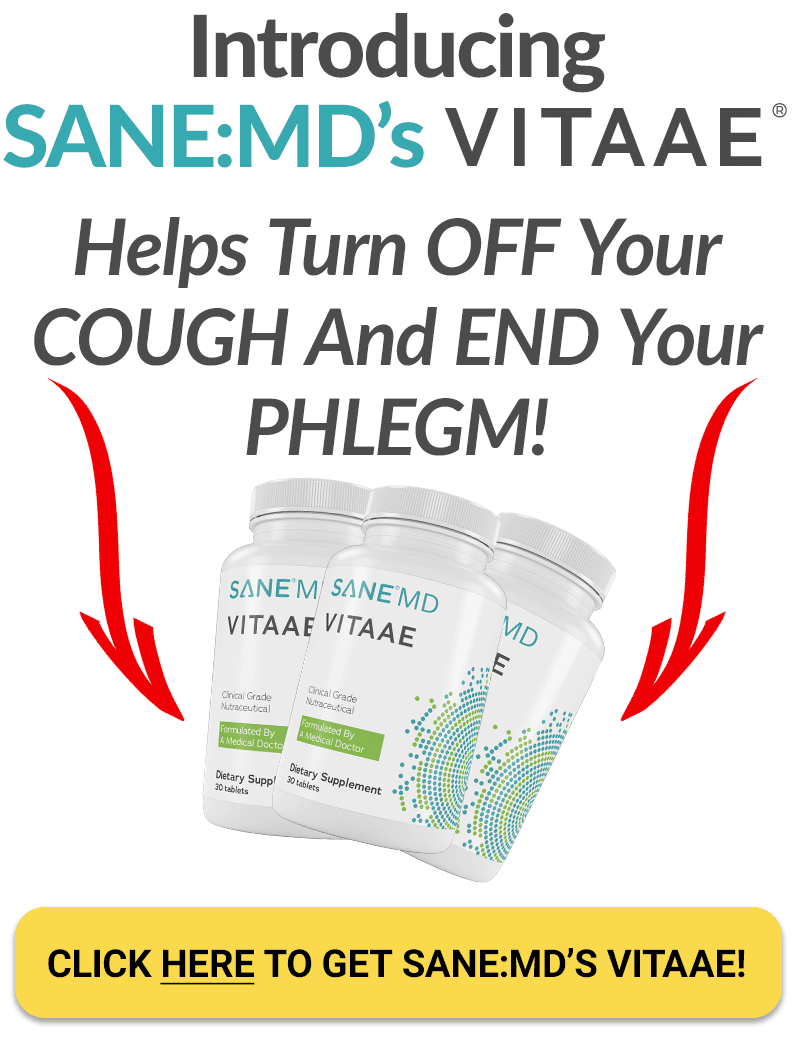Humidifiers Benefits, Types, Risks & More
If you want to make your home more comfortable and healthier, you should consider humidifiers benefits. Humidifiers are helpful tools for promoting health and wellness and help create a comfortable living space.
You can use a humidifier in your home during the winter months when the heat is on high or in the summer to counteract the effects of air conditioning. The humidifiers benefits are relevant year-round, regardless of your humidification requirements.
In this blog post, we will explore the benefits of using humidifiers, the various types of machines available, the associated risks, and alternative remedies to help you feel better more quickly.
- Dry indoor air harms health and can lead to nosebleeds, dry and itchy skin, increased risk of contracting the flu and other respiratory viruses, asthma, runny nose, congestion, and dry throat.
- By adding more moisture to the air, humidifiers help relieve chest and nasal congestion, allergies, sinus headaches, sore throat, and much more. They can also reduce your risk of cold and flu, asthma flare-ups, and allergy attacks.
- Alternative remedies include using a saline nasal spray for dry nasal passages, gargling with salt water, drinking lots of water, and taking brief showers in warm water.
What is a humidifier?
Humidifiers are machines that increase the moisture or water vapor in the air, making the living space more humid.
The most popular method is evaporation, where distilled water is added to the device and released as droplets of water vapor. As these droplets mix with the air, they evaporate and boost the humidity levels in the room. The increase in humidity can be gauged using a humidistat.
The Effects of Humidity Levels
You might not think about humidity levels in your home or outdoors, but they significantly affect the human body.
Low humidity can cause discomfort by drying out the eyes, skin, and mucous membranes. It can also lead to the sensation of being colder because sweat evaporation, which cools the body, happens more quickly in low humidity.
On the other hand, high humidity can hamper the body’s cooling mechanisms, as sweat does not evaporate as quickly in such conditions. So, too much humid air can increase core body temperature, which, in turn, causes our bodies to work harder to cool us down. If sweating doesn’t work and our bodies continue to heat up, it can result in overheating or heat exhaustion.
When our bodies begin to overheat, we experience a loss of essential minerals and nutrients, such as water and salt, which can cause dehydration and imbalances in the body. In severe cases, it can even lead to death. Moreover, high humidity worsens respiratory issues and promotes the growth of allergens such as dust mites and mold, which can lead to other health issues.
Humidifiers can improve indoor air quality so that humidity levels are neither too high nor too low.
5 Specific Humidifiers Benefits
Here are five science-backed health benefits of humidifiers.
1. Influenza (Flu) Protection
According to a study, using humidifiers can lower the chances of getting the flu. The researchers simulated coughing to release the influenza virus into the air and discovered that humidity levels above 40% quickly made the virus particles inactive, thus reducing their infectiousness (1).
The reason behind this is that the influenza virus thrives in dry environments. Another study (2) conducted in 2010 looked into the effects of using portable humidifiers during winter and found that they decreased the survival rate of the influenza virus by 17.5% to 31.6%.
2. Soothes Dry Skin
There are various heating units that circulate hot, arid air in buildings and homes, which can strip the skin of its moisture, leading to feelings of dryness, itchiness, or flakiness. Furthermore, the cold outdoor air can also cause skin dryness.
To alleviate these discomforts and restore skin radiance, humidifiers can raise the humidity level in the air. An instance of this was demonstrated in a small 2008 study (3) conducted in a Japanese hospital, where using a humidifier during the winter season increased the humidity from 32.8% to 43.9%, effectively relieving staff members’ symptoms of dry and itchy skin.
3. Reduces Asthma and Allergy Symptoms
Did you know that dry air can worsen asthma symptoms and even trigger an attack? It can also promote the growth of allergens like bacteria, dust mites, and mold, irritating allergy sufferers. This dry air can cause discomfort by drying out the delicate membranes of the nose and respiratory tract, leading to difficulty breathing, a sore throat, and snoring.
Consider using a humidifier to add moisture to the air to ease these symptoms. By doing so, you can soothe the tissues in your nose and throat, relax your lungs, and relieve many asthma and allergy symptoms, including:
- Coughing
- A dry, scratchy throat
- Runny nose
- Sinus congestion
- Nose bleeds
4. Eases Congestion
Did you know that humidifiers can help relieve congestion? When you’re sick, your respiratory tract produces more mucus, which can become sticky and difficult to expel when it dries out. Adding moisture to the air with a humidifier can make it easier to cough or blow your nose and get rid of that stubborn mucus.
5. Reducing Snoring
There are several causes of snoring, such as sleep apnea, being overweight, having chronic conditions, experiencing dry air, or having congestion due to colds or the flu. A humidifier may be helpful if you are dealing with congestion or dry air. It adds moisture to the air, which can make it easier to breathe during sleep.
However, if snoring persists, it’s important to consult a medical professional. A humidifier can help manage snoring caused by environmental factors, but a healthcare provider should address chronic snoring.
Other Humidifiers Benefits
Humidifiers can help those who experience:
- Dry throat
- Chest and nasal congestion
- Sinus headaches
- Bloody noses
- Dry hair
- Persistent cough
- Eye irritation
- Dry, cracked lips
- Allergies
Types of Humidifiers
There are several types of humidifiers.
Warm Mist Humidifiers
- Steam vaporizers: Steam vaporizers create steam by boiling water, which is then released into the air. This makes it one of the most hygienic humidifiers that can improve indoor humidity levels.
- Central humidifiers: Central humidifiers are built into the forced heating and air conditioner system to humidify the air as it is heated. Unlike portable humidifiers, which need water to be manually added periodically, these devices automatically pump water from household plumbing into the humidifier.
Cool Mist Humidifiers
- Ultrasonic humidifiers: Ultrasonic humidifiers release water molecules into the air using vibrations instead of boiling water, making them a safer option for children. Additionally, they operate quietly.
- Evaporative humidifiers: Evaporators use a fan to release moisture into the air. They are usually affordable, and the filter prevents harmful microorganisms from entering your air.
- Impeller humidifiers: Humidifiers with impellers use a spinning disk that diffuses water into the air. However, this process produces a low humming noise, and it is important to clean the tank frequently to prevent harmful bacteria from being dispersed into the air.
Potential Risks of Using a Humidifier
There are a few risks associated with humidifiers, with burns being the most common. Therefore, you must take special care if you have children. Never let children handle humidifiers, and don’t put a warm-mist steamer in a location where the child has easy access to it, like in their bedroom. A cool mist humidifier is safer for children.
Further, if a humidifier expels too much moisture, it can cause wall condensation, leading to mold growth. Placing the humidifier too close to fabrics like beds, sofas, or drapes can also cause dampness, which can promote mold growth that spreads throughout the home.
According to a 2022 study (4), unclean humidifiers can cause bacterial growth, leading to coughs and colds. To prevent bacterial growth, it is essential to clean the unit regularly as per the manufacturer’s instructions. During use, the bucket and filter system should be washed every 2 to 3 days.
Finally, humidifiers can potentially release minerals and microorganisms that can bother people with asthma. Therefore, it is advisable to use distilled water instead of tap water to avoid this problem.
Alternative Remedies
If you don’t have a humidifier, you can take simple steps to ease some problems tied to dry air:
- Use a saline spray or rinse for dry nasal passages
- Gargle with warm salt water several times daily to ease sore throat due to cold or allergy. Mix a quarter teaspoon of salt with a half cup of water to prepare an effective gargle. Spit it out when you’re done gargling.
- Stay hydrated by drinking lots of water.
- Keep your skin moist by limiting showers to 5 to 10 minutes in warm, not hot water.
Summary
During the dry winter seasons, using a humidifier can be beneficial in preventing sickness caused by the spread of influenza. It can also assist in moisturizing skin, relieving congestion, reducing snoring, and easing allergy and asthma symptoms.
However, it is essential to maintain your humidifier properly as it may collect harmful bacteria, which could exacerbate allergy symptoms or lead to infections. To achieve these health benefits, cleaning your humidifier thoroughly and monitoring humidity levels is crucial.
Frequently Asked Questions
Is it good to sleep with a humidifier?
Making a small change, like using a humidifier at night, can significantly impact your health. Too much humidity can disrupt your sleep quality, but using a humidifier while you sleep can help keep your body healthy. Experts suggest aiming for a relative humidity level of 40 to 60 percent indoors throughout the year.
What are the benefits of using a humidifier?
Humidifiers are helpful devices that increase the moisture in the air, preventing dryness, which can irritate various parts of the body. They are specifically effective in treating dryness of the skin, nose, throat, and lips and can also alleviate specific symptoms of the flu or common cold.
What are the benefits of a humidifier in the winter?
A humidifier is a device that helps to increase the amount of moisture in the air within your home, particularly during the winter season when humidity levels tend to be lower. Using a humidifier in your home can alleviate issues such as dry skin, sore throats, and other related discomforts while enhancing the overall comfort of your living space.
Can I use tap water in a humidifier?
It is possible to use tap water in a humidifier, but it is not advisable. It is better to use demineralized, distilled, or purified water, which can be purchased at a store. This type of water reduces the likelihood of mold and bacteria growth within your humidifier.
What is the difference between a humidifier and a dehumidifier?
During periods of low humidity, humidifiers add moisture to the air. Typically, people utilize them in the winter to counter the dryness of the winter air. Conversely, dehumidifiers are employed during the spring and summer to extract moisture from the air when humidity levels are too high.
1- https://journals.plos.org/plosone/article?id=10.1371/journal.pone.0057485
2- https://www.ncbi.nlm.nih.gov/pmc/articles/PMC2940868/
3- https://www.sciencedirect.com/science/article/abs/pii/S0003687007000592
4- https://onlinelibrary.wiley.com/doi/epdf/10.1111/ina.12964
The 6 Best Natural Decongestants to Relieve Stuffy Nose in 2024
Natural decongestants can provide safe and effective relief from stuffy nose and sinus problems, whether a cold, allergies or some other ailment cause the symptoms. Indeed, they are a better alternative to over-the-counter remedies for congestion that often come with unwanted side effects, making you feel tired, sluggish, and foggy-headed.
In this comprehensive guide, you’ll discover six scientifically-backed natural remedies that offer safe, natural congestion relief. Home remedies like these are often gentler on the body and may be a better option for regular use.
- Nasal and sinus congestion can be caused by various factors, like the common cold, the influenza virus, allergies, pollution, or dry air.
- Though numerous prescription and over-the-counter decongestants exist, they often cause troublesome side effects that can significantly interfere with your daily life. Natural decongestants like humidifiers, nasal irrigation, keeping hydrated, using warm compresses, using a throat cleaner, eating chicken noodle soup, and trying essential oil may be healthier options with fewer side effects.
- See your doctor immediately if you experience chronic congestion, if your symptoms don’t improve within a few days of using natural decongestants, or if you have a high fever or chest pain.
Causes of Nasal Congestion
If you’re experiencing nasal congestion, it could be due to various factors like a cold, flu, allergies, pollution, or dry air.
Many people assume that excess mucus is the culprit, but in reality, inflamed blood vessels in the sinuses cause nasal congestion. When an irritant like an allergen or virus enters the nose, it increases blood flow to the vessels lining the nasal cavity. Consequently, the nasal passages become swollen, making it difficult to breathe. Swelling can also hinder mucus drainage, leading to further airflow blockage.
The good news is you can relieve your congestion at home with the simple remedies below, regardless of the cause, without visiting a drugstore.
Natural Decongestants for Nasal Congestion
1. Use a Humidifier or Cool Mist Vaporizer Regularly
A humidifier or cool-mist vaporizer is a simple and effective way to alleviate sinus congestion and nasal stuffiness in your home or office. Breathing in humid air can help soothe irritated nasal tissues, reduce sinus inflammation, and thin mucus, which allows it to drain.
Both warm-mist and cool-mist machines are natural decongestants that are effective in increasing humidity levels and relieving congestion. However, using cool-mist vaporizers for children is essential since warm-mist humidifiers can cause burns if they get too close or knock the machine over.
Strive to maintain indoor relative humidity between 30% and 50% (1). Dry air may worsen congestion, but excess moisture can cause mold and worsen allergies.
Regardless of the type of unit you choose, change the water daily and clean it according to the manufacturer’s instructions to prevent the growth of bacteria and mold.
Don’t have a humidifier or a cool mist vaporizer? No problem. Here are a few DIY ways to create natural decongestants by adding moisture to the air:
- Boil a pot or kettle of water on the stove for a few minutes. This method uses the power of evaporation to moisturize the air. Evaporation turns the water into vapor, which moisturizes the air in your home.
- Take a hot shower, breathing in the steam.
- Inhale the steam of a pot of hot water. For this method, start by heating a pot of water on the stove until it’s almost but not quite boiling. Then, create a tent by draping a towel over your head to trap the steam. While keeping your head under the towel, lean carefully over the pot and inhale the steam for approximately five to ten minutes.
- Run a tabletop fountain. This not only adds moisture to the air, but the sound of running water also soothes the nerves!
2. Try Nasal Irrigation
If you’re experiencing nasal congestion and blocked sinuses, using a nasal irrigator like a neti pot, bulb syringe, or squeeze bottle might help. These devices can provide relief by moistening your nasal passages and loosening thick mucus.
If you’re worried about pouring water into your nose, you’ll be glad to know that many nasal irrigators come with a salt mixture that can help reduce the discomfort of this process. To make the saline solution, follow the instructions on the package, mix it with lukewarm water, and then follow these steps:
- Lean over a sink.
- Tilt your head sideways.
- Gently pour the water into one nostril while breathing through your mouth. The solution will drain out your other nostril.
- Repeat on the other side.
Never use tap water in your neti pot for best results and to avoid complications. Instead, use distilled bottled water or water that has been boiled and cooled.
You must also clean your neti pot thoroughly after each use. Ensure it’s free of dust, cleaning chemicals, or anything else that could irritate your nasal passages or trigger allergies.
3. Increase Fluid Intake
Drinking plenty of water can help clear congestion and promote mucus flow. Warm water and other liquids are effective, but avoid caffeinated beverages.
Fun fact: Many people believe that drinking hot tea can help relieve congestion, but according to a previous study (2) published in the Rhinology journal, it may not matter if the drink is hot or cold. In the study, researchers divided a group of people with cold and flu symptoms into two groups: one was given a hot drink, while the other received a room-temperature glass. The study found no significant differences in nasal airflow between the two groups.
However, the group that consumed the hot beverage reported feeling more relief from cold symptoms than the others. The researchers suggest that this could be because the drink’s heat enhances the flavor and overall experience, which can make you feel better.
4. Use a Warm Compress
If you’re struggling with a stuffy nose, a warm compress may help alleviate the discomfort by decreasing inflammation and opening up your nasal passages from the outside.
To make one, soak a washcloth or small towel in warm (not hot) water, then wring out the excess water and fold it. Place the compress over your upper nose and lower forehead to enjoy the soothing warmth.
This can help reduce inflammation in your nostrils and sinuses, making breathing easier. Be sure not to keep the compress on your face for too long to avoid the risk of burning your skin.
5. Eat Chicken Noodle Soup
Chicken noodle soup is one of the most popular decongestants for those feeling under the weather, and for good reason. The steam created by hot soup can help hydrate and loosen mucus, while cysteine in chicken can break up and thin mucus. It’s important to note that the broth in chicken soup can also benefit hydration, but it’s best to avoid high sodium levels.
Cysteine is an amino acid in foods like chicken, turkey, garlic, yogurt, eggs, and whole grains. It can also be taken as a dietary supplement. Cysteine has been used as a supplemental treatment for bronchitis and chronic obstructive pulmonary disease, in addition to helping with congestion.
6. Try Essential Oils
It is believed that certain essential oils are natural decongestants that may provide relief from congestion symptoms, although there is limited evidence to support this.
In a study conducted in 2010, participants were given an essential oil spray containing peppermint, eucalyptus, oregano, and rosemary five times a day for three days. Upon concluding the study, researchers found that the spray effectively improved upper respiratory symptoms immediately after use but did not alleviate symptoms after three days of use.
Essential oils can be combined with carrier oils, such as coconut or jojoba oil, and applied topically to the cheeks to relieve sinus pressure and congested sinuses. Alternatively, they can be used in a diffuser for aromatherapy.
Some of the essential oils found to help sinus infections and relieve sinusitis symptoms include:
- Eucalyptus oil
- Lavender oil
- Tea tree oil
- Rosemary oil
- Peppermint oil
It is important to keep essential oils out of reach of children and pets, as they can be toxic if ingested.
When to See a Doctor if Using Natural Decongestants
Congestion can cause breathing, sleeping, and eating difficulties. If natural remedies don’t work after a few days, seek medical consultation. You also must see a doctor if you experience the following:
- Severe sinus symptoms, such as nosebleeds, which can indicate acute sinusitis
- High fever
- Trouble breathing
- Chest pain
Summary
Having a congested nose is a common indication of colds, flu, allergies, and a sinus infection, which can lead to inflamed nasal passages and airways filled with mucus.
Over-the-counter medications can offer short-term relief from congestion but often have distressing side effects. Thankfully, many natural remedies can relieve nasal congestion and sinus pain without side effects.
However, it’s important to note that although many natural decongestants are generally safe for everyone, some come with risks for adults and children.
If your congestion persists despite trying natural remedies or worsens, it’s best to schedule an appointment with your doctor for proper evaluation and treatment.
Frequently Asked Questions
What are good natural decongestants?
Looking for a solution to ease sinus congestion and nasal stuffiness at home or in the office? Consider using a humidifier or cool-mist vaporizer. This simple and effective natural method involves breathing in humid air, which can help soothe irritated nasal tissues, reduce sinus inflammation, and thin mucus to facilitate drainage. Give it a try and experience the benefits for yourself!
How can I unblock my sinuses naturally?
Natural home remedies to relieve facial pain and pressure and sore throat from sinus congestive, allergic rhinitis, dry nasal passages, and other sinus congestion symptoms include:
- Using a humidifier or cold-mist vaporizer
- Employing nasal irrigation using neti pots or other method
- Increasing fluid intake
- Using a warm compress on the face and nose
- Eating chicken soup
- Using essential oils
- Using a saline nasal spray
What can I drink to unclog my sinuses?
- Herbal tea
- Cold or warm sterile or distilled water
- Hot water with lemon and honey
- Broth
What can I eat to unclog my sinuses?
- Chicken noodle soup
- Spicy foods like red peppers and chillies
- Pineapple
- Ginger
- Antioxidant-rich foods like berries, pumpkin, pineapple, and kiwi. These foods have anti-inflammatory properties that reduce inflammation in your nasal passages, supporting your respiratory system.
- New Report Says Your Brain Could Be the Key to Reducing Phlegm Over 50
- Doctor's "Leave The Throat Phlegm Behind" Tutorial Goes Viral With People Over 50
- Can You Relieve Throat Phlegm and Coughing In 60 Seconds A Day? This Doctor Says Yes
- How To Banish Phlegm When 50+ (Do This Every Day)
References
1- https://medlineplus.gov/ency/article/002104.htm
The 6 Best Natural Antihistamines for Allergies in 2024
When it comes to allergy symptom relief, did you know that natural antihistamines can be as effective as their pharmaceutical counterparts without all those bothersome side effects?
If you’ve never heard of natural antihistamines, you’re in for a treat. In this SANE MD blog post, we will discuss how OTC and prescription antihistamines work and then delve into science-backed natural alternatives.
- New Report Says Your Brain Could Be the Key to Reducing Phlegm Over 50
- Doctor's "Leave The Throat Phlegm Behind" Tutorial Goes Viral With People Over 50
- Can You Relieve Throat Phlegm and Coughing In 60 Seconds A Day? This Doctor Says Yes
- How To Banish Phlegm When 50+ (Do This Every Day)
Key Takeaways
- Seasonal allergies, also called allergic rhinitis, cause various symptoms, including runny nose, sneezing, cough, sore throat, and nasal congestion.
- OTC and prescription antihistamine medications are widely available for seasonal allergies but have side effects. On the other hand, natural antihistamines can reduce allergy symptoms without distressing side effects.
- Several natural antihistamines have been proven to help reduce allergic rhinitis symptoms, including vitamin C, Quercetin, Stinging Nettle, Bromelain, Spirulina, throat cleaner, and Butterbur.
What are Antihistamines?
In simple terms, antihistamines are a drug typically used to treat allergy symptoms such as sneezing. But this definition, of course, doesn’t explain how antihistamine medications work. Before going into their mechanisms of action, we must explore what triggers allergic reactions.
Allergies are immune responses to typically harmless substances like pollen, dust, or animal dander. Upon exposure to an allergen, the immune system signals most cells in different body parts to release histamine. Histamines promote blood flow to the affected area, leading to inflammation that guards the surrounding cells from the allergen. Additionally, histamines prompt specific receptors to eliminate allergens from the body, causing symptoms like a runny nose, nasal congestion, sneezing, and itchy eyes.
Antihistamines work by blocking the effects of histamines in the body, reducing histamine production. They are commonly used to alleviate allergy symptoms like congestion, cough, runny nose, sneezing, and itchy, watery eyes that occur with allergic rhinitis, also known as seasonal allergies. Antihistamines can also seem like a lifesaver if you have perennial rhinitis, where allergy symptoms are present year-round.
Symptoms of Allergic Rhinitis
Antihistamines are often used to treat seasonal allergies, also called allergic rhinitis, with symptoms that can include:
- Runny nose
- Stuffy nose
- Cough
- Frequent sneezing
- Sore, scratchy throat
- Nasal congestion
- Itchy, watery eyes
- Postnasal drip
- Fatigue
- Headache
How do Natural Antihistamines Work?
Natural antihistamines function similarly to antihistamine medications by blocking histamine activity, and some additionally reduce inflammation and oxidative stress, factors known to contribute to allergic reactions.
Many foods contain natural antihistamines, and you can also take them in supplement form.
Top Rated Natural Antihistamines
Below are six substances or compounds that are natural antihistamines that have been shown to relieve allergy symptoms and boost the immune system.
1. Vitamin C
You might be aware that vitamin C is beneficial in reducing the length and intensity of colds. However, it also possesses anti-inflammatory and antioxidant properties. Studies indicate that inflammation and oxidative stress, caused by an imbalance of free radicals, are significant factors in allergies.
According to research, administering high doses of intravenous vitamin C effectively alleviated allergy symptoms. Additionally, evidence suggests that a deficiency in vitamin C could lead to allergy development (1).
You can get Vitamin C in a wide variety of foods, including:
- Citrus fruits like oranges or grapefruits and their juices
- Broccoli
- Raw green or red peppers
- Strawberries
- Tomatoes
- Grapefruits
- Kale
- Kiwi
You can also purchase vitamin C supplements, typically ascorbic acid, at stores and online outlets.
Because vitamin C is water soluble and not stored in the body but instead excreted through urine, severe side effects are rare, even at significantly high doses (2).
Mild side effects may include (2):
- Bloating
- Diarrhea
- Stomach cramps
- Nausea
- Headache
- Upset stomach
It’s important to note that excessive amounts of vitamin C can interfere with the absorption of certain vitamins and minerals (2). Therefore, it’s best to refrain from taking mega doses of this vitamin.
2. Quercetin
Quercetin is a flavonoid that occurs naturally and possesses anti-allergy and antihistamine properties. Studies have revealed that Quercetin helps to maintain a balanced immune system, reduces the release of histamine, and reduces inflammation in the body. Quercetin is commonly used to relieve the symptoms of hay fever.
Quercetin is widely available in a variety of herbs and foods, including:
- Asparagus
- Lettuce
- Onions
- Dill
- Chili peppers
- Cranberry
- Oregano
- Blueberry
- Fennel leaves
- Ginkgo biloba
- Green tea
- Cherries
Many people find that taking quercetin supplements is more effective than consuming quercetin-rich foods in relieving allergies. For maximum effectiveness, quercetin should be taken for six to eight weeks.
3. Stinging Nettle
Stinging nettle, or Urtica dioica, has been used in herbal medicine for centuries. The ancient Egyptians used it to alleviate arthritis and lower back pain, while Roman soldiers applied it to stay warm (3).
Even today, stinging nettle is a popular herb in natural medicine and has been found to have natural antihistamine properties. In a study conducted in 2000, 58% of participants experienced relief from their symptoms after using freeze-dried nettles, with 69 participants rating it better than a placebo (3).
Additionally, stinging nettle has shown promise as a natural remedy for hay fever, an allergic response that causes inflammation in the nose lining. Research has shown that extracts from the plant can inhibit inflammation that triggers seasonal allergies. This is due to its ability to block histamine receptors and prevent immune cells from releasing chemicals that cause allergy symptoms (3).
You can incorporate stinging nettle into your diet through various methods, such as cooking and consuming the plant’s young leaves or adding stinging nettle leaves to curries, pastries, breads, and soups.
Stinging nettle leaves can also be found online and at health food stores in tea or supplement form (capsules, tinctures, etc.) The study participants in question used 300 milligrams (mg) each day.
4. Bromelain
Did you know that bromelain, an enzyme found only in pineapples, has anti-inflammatory properties? It’s true!
In addition to fighting inflammation, bromelain is effective in reducing allergy-related respiratory irritation (4). This is because it breaks down proteins that cause inflammation and swelling, which helps to alleviate allergy symptoms such as nasal congestion and sinus pressure.
Although bromelain is available in supplement form, consuming fresh pineapple may also provide benefits. However, it’s important to note that fresh pineapples contain a high amount of naturally occurring histamines. Therefore, if you have issues with histamine, such as histamine intolerance, it’s best to avoid eating fresh pineapple.
5. Spirulina
Spirulina, a type of blue-green algae, is highly regarded as a superfood due to its rich nutritional content. Recently, it has gained attention for its natural antihistamine properties. Spirulina contains compounds such as phycocyanin and carotenoids, which possess anti-inflammatory properties and may help alleviate allergy symptoms.
Its effectiveness lies in hindering the release of histamine and other inflammatory chemicals that cause symptoms such as a runny nose, sneezing, and itching. Spirulina can be consumed in either supplement form or added to smoothies and other foods.
6. Butterbur
Butterbur, a marsh plant from the daisy family, can be found in various regions across Europe, Asia, and North America.
Studies (5) have indicated that it may reduce the frequency and severity of migraines and treat nasal allergies. Furthermore, research has shown that taking butterbur supplements may improve allergy symptoms in individuals (6).
Butterbur seems to be well-tolerated by most people, but some individuals may experience side effects, including:
- Diarrhea
- Fatigue
- Headache
- Problems breathing
- Itchy eyes
- Drowsiness
Butterbur can be consumed either in the form of oil extract or pills.
Alternative Treatments to Natural Antihistamines
Alternative remedies and practices may work if natural antihistamines do not reduce your allergy symptoms.
Alternative methods to treat and prevent allergy symptoms include:
Allergen Avoidance
Allergy avoidance is typically the first step in reducing allergic reactions, whether or not you use natural or pharmaceutical antihistamines.
Common allergens include:
- Grass pollen
- Dust mites
- Cat saliva
- Animal dander
- Mold
Immunotherapy
Immunotherapy may be a good option if you have severe allergies and your medication doesn’t help relieve symptoms.
During this treatment, a healthcare provider will give you a series of injections that contain small amounts of the allergen. The goal of this treatment, which can last several years, is to desensitize your body to the allergen.
Doctors may suggest sublingual immunotherapy for those with pollen allergies, which involves dissolving a tablet under the tongue.
Nasal Irrigation
Nasal irrigation involves flushing out mucus, allergens, and debris from your nasal passages and sinus cavity to help you breathe more freely.
Many people use a neti pot to perform this procedure.
However, saline nasal spray or nebulizers can also serve as nasal irrigation systems, as they help to moisten mucous membranes.
Epinephrine Use
Individuals with severe allergies should carry an emergency epinephrine shot, such as Auvi-Q or EpiPen, at all times. Administering this treatment at the onset of an allergic reaction can reduce symptoms and potentially save a life.
Other Alternative Treatments to Natural Antihistamines
Other alternative treatments for allergies include the following:
- Use an air purifier to remove allergens from the air.
- Replace your HVAC filter regularly.
- Vacuum the carpet regularly.
- Use essential oils like peppermint, eucalyptus, and chamomile.
- Exercise regularly.
Summary
Dealing with allergies can be difficult, especially when symptoms are severe. It is recommended to seek medical assistance and guidance to manage allergy symptoms.
Some natural substances may possess antihistamine properties, which can help break down the chemicals that cause allergy symptoms. However, more research is needed to determine the effectiveness of these natural remedies.
To achieve relief, limiting or avoiding exposure to allergens is advisable. You can also practice good self-care techniques and consider using natural antihistamines.
It is crucial to consult with a doctor before starting any new supplement or herbal remedy, as the United States Food and Drug Administration (FDA) does not regulate supplements, and natural remedies can interfere with certain medications.
Frequently Asked Questions
What are the most powerful natural antihistamines?
There are many powerful natural antihistamines, including:
- Vitamin C
- Quercetin
- Stinging Nettle
- Bromelain
- Spirulina
- Butterbur
What is a good herbal choice among natural antihistamines?
Stinging Nettle is a natural antihistamine with a centuries-old history of relieving allergies and reducing inflammation. This plant works by inhibiting immune signaling that triggers most cells to release histamine, which is responsible for causing allergic reactions. By doing so, stinging nettle can help alleviate various respiratory allergic symptoms and reduce allergic reactions.
What are natural antihistamines similar to Benadryl?
Several natural substances or compounds can have similar effects to Benadryl, including vitamin C, Stinging Nettle, bromelain, quercetin, spirulina, and butterbur. In addition, nasal irrigation, regular exercise, using an air purifier, regularly changing the filter in your heating and air conditioning system, and essential oil usage can help you manage your symptoms.
- New Report Says Your Brain Could Be the Key to Reducing Phlegm Over 50
- Doctor's "Leave The Throat Phlegm Behind" Tutorial Goes Viral With People Over 50
- Can You Relieve Throat Phlegm and Coughing In 60 Seconds A Day? This Doctor Says Yes
- How To Banish Phlegm When 50+ (Do This Every Day)
References
1- Vollbracht C, Raithel M, Krick B, Kraft K, Hagel AF. Intravenous vitamin C in treating allergies: an interim subgroup analysis of a long-term observational study. J Int Med Res. 2018;46(9):3640-3655. doi:10.1177/0300060518777044
2- https://ods.od.nih.gov/factsheets/VitaminC-HealthProfessional/
3- https://www.sciencedirect.com/science/article/abs/pii/S2210803312000978
4- https://www.ncbi.nlm.nih.gov/pmc/articles/PMC3870104/



